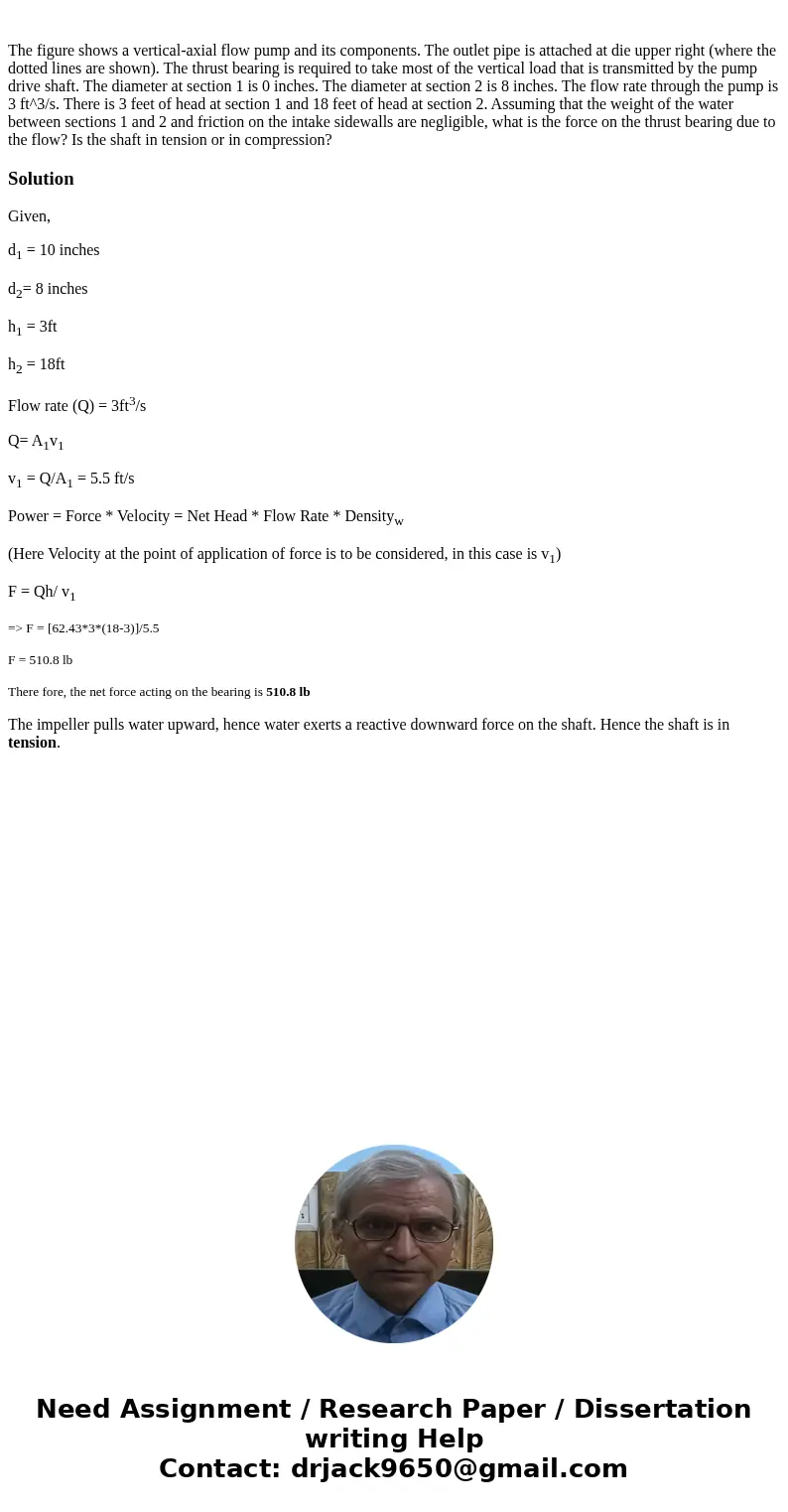The figure shows a vertical-axial flow pump and its components. The outlet pipe is attached at die upper right (where the dotted lines are shown). The thrust bearing is required to take most of the vertical load that is transmitted by the pump drive shaft. The diameter at section 1 is 0 inches. The diameter at section 2 is 8 inches. The flow rate through the pump is 3 ft^3/s. There is 3 feet of head at section 1 and 18 feet of head at section 2. Assuming that the weight of the water between sections 1 and 2 and friction on the intake sidewalls are negligible, what is the force on the thrust bearing due to the flow? Is the shaft in tension or in compression?
Given,
d1 = 10 inches
d2= 8 inches
h1 = 3ft
h2 = 18ft
Flow rate (Q) = 3ft3/s
Q= A1v1
v1 = Q/A1 = 5.5 ft/s
Power = Force * Velocity = Net Head * Flow Rate * Densityw
(Here Velocity at the point of application of force is to be considered, in this case is v1)
F = Qh/ v1
=> F = [62.43*3*(18-3)]/5.5
F = 510.8 lb
There fore, the net force acting on the bearing is 510.8 lb
The impeller pulls water upward, hence water exerts a reactive downward force on the shaft. Hence the shaft is in tension.

 Homework Sourse
Homework Sourse